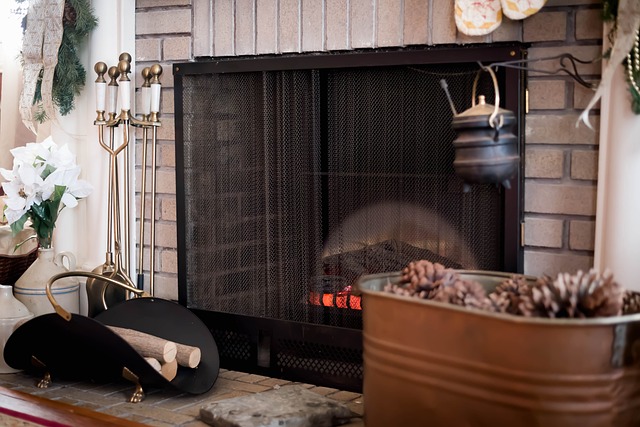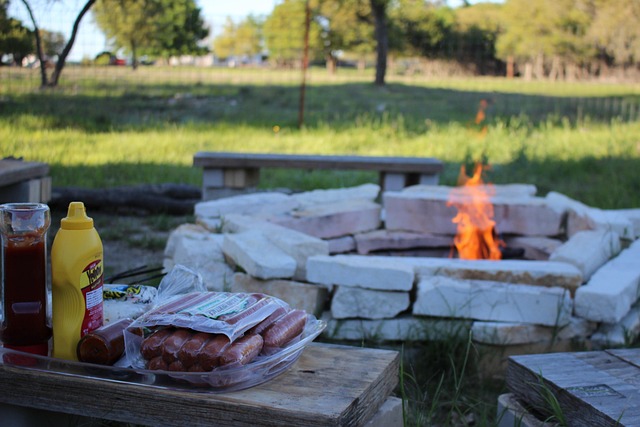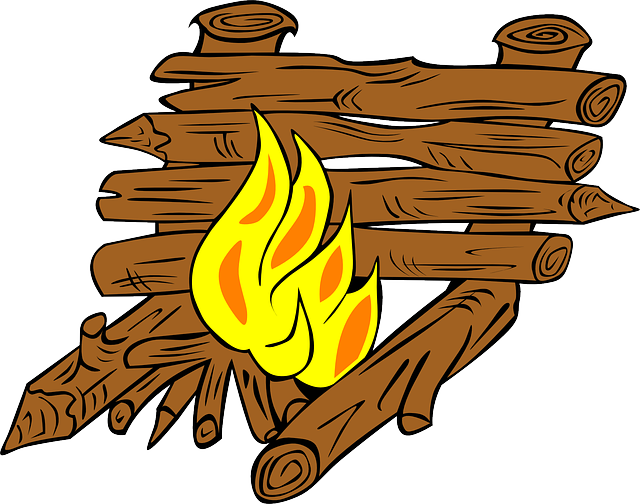An outdoor fireplace is a transformative element for any backyard, offering warmth and ambiance for year-round enjoyment. This feature becomes the heart of your outdoor living space, enhancing relaxation and entertaining with its captivating fire display. Design possibilities range from material choices like stone, brick, and concrete to strategic placement, ensuring safety and aesthetics. Incorporate seating areas, custom lighting, and plants for a vibrant, cozy oasis that seamlessly blends indoor and outdoor living.
Constructing an outdoor fireplace is a fantastic way to enhance your living space, offering a cozy ambiance for entertaining and relaxation. This guide delves into the expert construction of outdoor fire areas, covering crucial aspects from choosing the ideal location to design considerations that maximize functionality. We explore robust construction materials and safe techniques, ensuring longevity. Additionally, we discuss incorporating features like seating and landscaping to transform your outdoor space into a captivating, usable area.
- Choosing the Right Location for Your Outdoor Fireplace
- Design and Layout Considerations for Optimal Functionality
- Construction Materials and Techniques for Durability and Safety
- Incorporating Additional Features to Enhance Your Outdoor Living Space
Choosing the Right Location for Your Outdoor Fireplace

Design and Layout Considerations for Optimal Functionality

Construction Materials and Techniques for Durability and Safety

When constructing an outdoor fireplace, selecting the right materials and techniques is paramount for both durability and safety. Stone, brick, and concrete are popular choices due to their resilience against extreme temperatures and weather conditions. These materials also offer a natural aesthetic that seamlessly blends with outdoor spaces. For instance, natural stone like granite or travertine can withstand intense heat while retaining its beauty over time.
Techniques such as proper jointing, sealing, and insulation further enhance the safety and longevity of the structure. Jointing ensures stability by filling gaps between materials, preventing shifts that could lead to cracks. Sealing protects against water damage, which is crucial since outdoor fire areas are often exposed to varying weather conditions. Insulation, particularly around the base and vents, helps regulate temperature, reducing the risk of unexpected heat fluctuations that could affect surrounding structures or individuals.
Incorporating Additional Features to Enhance Your Outdoor Living Space

When designing your outdoor living space, consider incorporating an outdoor fireplace as a central feature. This isn’t just about functionality; it adds a warm and inviting ambiance, transforming your backyard into a cozy oasis. Beyond the basic fireplace, there are numerous ways to enhance this feature. For instance, integrate built-in seating or a comfortable lounge area nearby, creating a dedicated space for gathering and socializing.
Adding custom lighting, such as landscape lights or string lanterns, can highlight the fire’s glow, setting the mood for intimate evenings with loved ones. Plants and potted flowers placed strategically around the fireplace not only enhance aesthetics but also provide natural insulation, contributing to a more enjoyable outdoor experience throughout the year. These additional features make your outdoor fireplace a true focal point and an extension of your indoor living space.
Building an outdoor fireplace is a fantastic way to enhance your living space, offering both functionality and ambiance. By carefully considering location, design, construction materials, and incorporating additional features, you can create a lasting and enjoyable outdoor retreat. Remember, the right outdoor fireplace not only complements your home’s aesthetics but also provides a gathering place for memories to be made. So, get ready to ignite your imagination and transform your outdoor area into a vibrant, bustling hub with a safe and durable outdoor fireplace.
